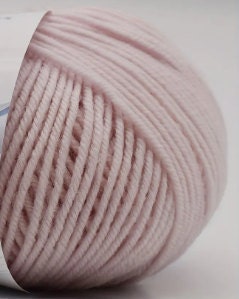Caring for wool yarn products does not have to be complicated, but it does require attention to detail. By following these washing, drying, storage, and handling techniques, you can ensure that your wool garments and yarn projects remain beautiful and functional for years to come. Whether you’re an avid knitter, a wool enthusiast, or simply someone who loves cozy wool clothing, proper care will help you enjoy the warmth and comfort of wool for a long time.
Wool is derived from the fleece of sheep and other animals like alpacas and goats. It has a natural elasticity, which allows it to stretch and return to its original shape. Wool is also highly absorbent, able to hold up to 30% of its weight in moisture without feeling damp. These qualities make it an excellent choice for winter wear and household textiles. However, wool is also susceptible to shrinking, felting, and damage from moths, making proper care essential.
Unlike synthetic fibers, wool requires gentle washing methods to prevent damage. Here are some key steps to washing wool properly:
Before washing any wool product, always check the care label. Some items are machine-washable on a delicate cycle, while others require hand washing.
For most wool yarn products, hand washing is the safest option.
Fill a basin with lukewarm water (not hot, as heat can cause shrinkage).
Add a mild detergent designed for wool, such as wool wash or baby shampoo.
Submerge the wool item and gently swish it around—do not wring or scrub.
Let it soak for about 10–15 minutes.
Rinse with clean, lukewarm water until the soap is completely gone.
If the care label states that the item is machine washable:
Use the wool or delicate cycle with cold or lukewarm water.
Select a low spin setting to prevent stretching.
Use a mild wool detergent.
Place the item in a mesh laundry bag for added protection.
Wool should never be wrung out or hung up while wet, as this can distort its shape.
Instead:
Lay the item flat on a dry towel and roll it up to squeeze out excess water.
Reshape the item and lay it flat on a fresh towel in a well-ventilated area, away from direct sunlight and heat sources.
Flip it periodically to ensure even drying.
Proper storage is crucial to maintaining the quality of wool products. Follow these guidelines to keep your wool items in excellent condition:
Moths are attracted to body oils and food particles, so always store wool items clean. Even if an item looks clean, a quick air-out or gentle wash before storage is recommended.
Avoid plastic bags, which can trap moisture and encourage mildew. Instead, store wool in cotton storage bags, breathable garment covers, or fabric-lined baskets.
Moths and other pests can cause irreparable damage to wool. To deter them:
Use natural repellents like lavender sachets, cedar blocks, or dried rosemary.
Store wool in airtight containers if you live in an area prone to moth infestations.
Check stored items periodically for signs of moth activity.
Hanging wool sweaters or scarves can cause them to stretch out of shape. Instead, fold them neatly and stack them in a drawer or on a shelf.
Wool is resilient, but it still requires careful handling to maintain its beauty and function. Here are some additional tips:
Wool does not need frequent washing, as its natural fibers resist dirt and odors. Simply airing out wool garments after wearing them can help maintain freshness.
Over time, wool may develop small balls of fiber known as pills. To remove them:
Use a fabric shaver or sweater comb to gently lift off pills.
Avoid pulling pills by hand, as this can damage the fabric.
If you spill something on a wool item:
Blot (do not rub) the stain with a damp cloth.
Use a mild detergent or white vinegar for tougher stains.
Test any cleaning solution on a hidden area first to ensure it won’t discolor the fabric.
For those who knit or crochet with wool yarn, keeping yarn in good condition is just as important as caring for finished products.
Keep wool yarn in sealed containers or fabric bags to protect against dust and pests.
Avoid storing yarn in damp areas to prevent mildew.
Wind loose yarn into neat balls or cakes to prevent tangling.
Blocking is a technique used to shape and set knitted or crocheted wool projects. To block wool:
Pin the project to the desired dimensions on a blocking mat.
Lightly mist with water or use steam from an iron (without touching the fabric directly).
Allow it to dry completely before removing pins.


